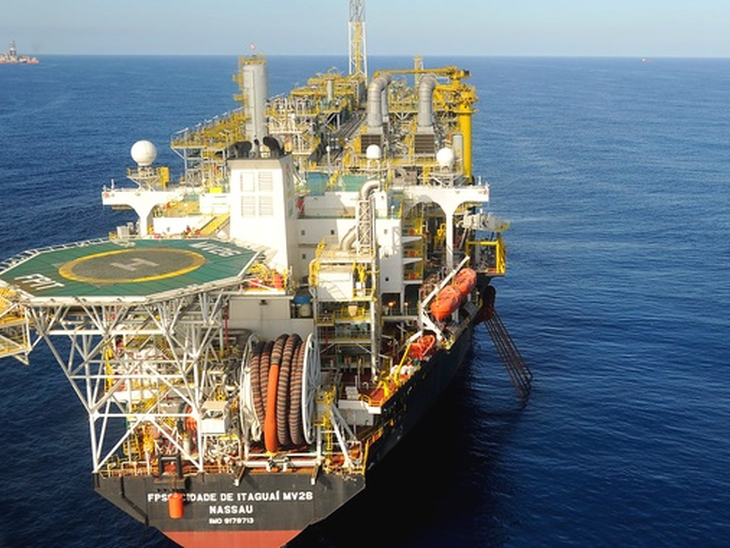
T&B Petroleum/Press Office ANP

In October pre-salt production increased by 4.6% over September, totaling 2.394 million barrels of oil equivalent per day (MMboe / d), with 1.905 million barrels per day (MMbbl / d) of oil and 77 , 6 million cubic meters per day (MMm3 / d) of natural gas. Compared to October 2018, the increase was 30.1%. Pre-salt production came from 111 wells and corresponded to 63.1% of the total produced in Brazil.
In October, oil and natural gas production in Brazil totaled 3,792 MMboe / d, of which approximately 2,964 MMbbl / d of oil and 132 MMm³ / d of natural gas. Oil production increased by 1.3% from the previous month and by 13.4% from October 2018, while natural gas increased by 2.1% from the previous month and from 12.4% compared to October 2018.
October production data are available on the page of the Monthly Oil and Natural Gas Production Bulletin.
Utilization of natural gas
In October, the use of natural gas was 97.3%, with 66.7 MMm³ / day available to the market. Gas flaring in the month was 3.508 MMm³ / d, an increase of 7.1% compared to the previous month and 16.3% compared to the same month in 2018. The main reason for the increase was the commissioning of production P-76 and P-77 in the field of Buzios, fundamental procedure for the subsequent operation of these units in safe conditions.
Producer fields
Lula, in the Santos Basin, was the field that produced the most oil, an average of 1.022 MMbbl / d, and also the largest producer of natural gas: an average of 43 MMm3 / d.
Origin of production
The maritime fields produced 96.5% of oil and 80.3% of natural gas. The fields operated by Petrobras produced 92.9% of oil and natural gas. Regarding the fields operated by Petrobras, with exclusive participation, they produced 42.1% of the total. National production occurred in 7,221 wells, of which 653 were maritime and 6,568 onshore.
Highlights
Estreito, in the Potiguar Basin, had the largest number of onshore producing wells: 1,092.
Marlim Sul, in the Campos Basin, was the maritime field with the largest number of producing wells: 73.
The FPSO Cidade de Itaguaí platform, producing in the Lula field through seven interconnected wells, produced 145.6 Mbbl / d and was the largest oil production facility.
The Polo Arara facility, producing in the fields of Arara Azul, Araracanga, Carapanauba, Cupiuba, Rio Urucu and Sudoeste Urucu, through 36 interconnected wells, produced 8.4 MMm³ / d and was the largest natural gas production facility.
Marginal accumulation fields
These fields produced 56.2 bbl / d of oil and 1.1 Mm³ / d of natural gas. The Itaparica field, operated by Newo, was the largest producer at 17.1 boe / d.
Other information
In October 2019, 294 areas granted, two onerous assignment and five production sharing areas, operated by 32 companies, were responsible for national production. Of these, 72 are maritime and 229 terrestrial. Of the total producing areas, 9 refer to contracts of areas containing marginal accumulations.
The average API grade was 27.5 and 3.2% of the production considered light oil (> = 31 ° API), 86.6% medium oil (> = 22 API and <31 API) and 10.2% heavy oil. (<22 API).
The mature terrestrial basins (fields / long-term tests of the Espírito Santo, Potiguar, Recôncavo, Sergipe and Alagoas basins) produced 108.2 Mboe / d, of which 86.7 thousand bbl / d of oil and 3.4 MM m³ / d of natural gas. Of this total, 100,600 boe / d were produced by Petrobras and 7,600 boe / d were produced by concessions not operated by Petrobras, of which: 360 boe / d in Alagoas, 4,769 boe / d in Bahia, 11 boe / d in Espírito Santo, 2,295 boe / d in Rio Grande do Norte and 198 boe / d in Sergipe.

Contact us